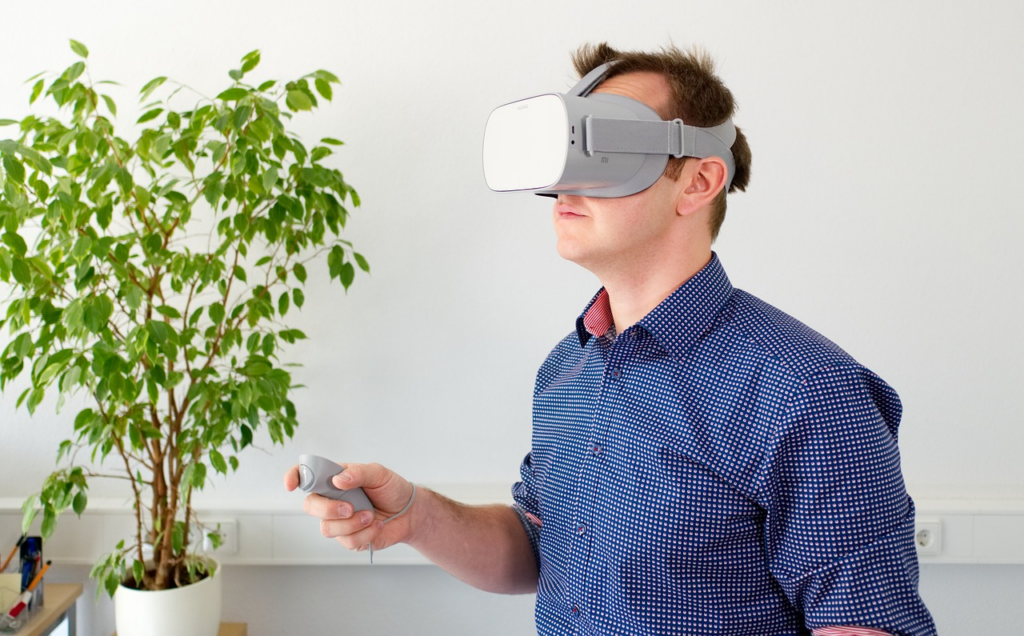Advertisement
In recent years, we have witnessed impressive advances in Virtual Reality (VR) and Augmented Reality (AR) technology, and their impact on gaming entertainment has been nothing short of revolutionary. From deeper immersions to more immersive interactions, these technologies are changing the way we experience games.
The Rise of Virtual and Augmented Reality
In recent years, we have witnessed a remarkable rise in Virtual Reality (VR) and Augmented Reality (AR), driven by significant advances in hardware, software and accessibility. Previously considered niche technologies or reserved for industrial applications, these technologies have evolved to become an integral part of digital entertainment, transforming the way we interact with the virtual world and the real world.
Advertisement
Virtual Reality: Beyond the Borders of Imagination
Virtual Reality offers an immersive experience that transcends the limitations of the traditional screen. By using specialized headsets, users are transported into three-dimensional virtual environments, where they can explore and interact with objects and characters in entirely new ways. From adventure and simulation games to educational and therapeutic experiences, Virtual Reality offers an unprecedented level of immersion, allowing users to immerse themselves in creative worlds and sensory experiences.
The launch of devices such as Oculus Rift, HTC Vive and PlayStation VR has democratized access to Virtual Reality, making it more accessible to home consumers. In addition, advances in motion tracking technology, screen resolution and haptic feedback have contributed to a more immersive and realistic experience.
Advertisement
Augmented Reality: Integrating the Digital into the Real World
While Virtual Reality creates isolated virtual worlds, Augmented Reality merges digital elements with the physical environment, offering a hybrid experience between the real and virtual worlds. Unlike Virtual Reality, which generally requires specialized hardware, Augmented Reality can be accessed through common devices such as smartphones and tablets.
The launch of popular apps such as Pokémon GO and Snapchat has brought Augmented Reality into the mainstream, demonstrating its potential for entertainment and social interaction. With Augmented Reality, users can superimpose digital information such as graphics, text and animations onto the physical environment around them, creating immersive and interactive experiences in real time.
Cultural and Social Implications
The rise of Virtual and Augmented Reality has profound cultural and social implications. These technologies are redefining the way we experience entertainment, communication, learning and even our perception of reality. By offering new forms of interaction and expression, Virtual and Augmented Reality are changing the way we relate to technology and to each other.
What's more, these technologies have the potential to transform entire sectors, from retail and tourism to education and health. By integrating the digital with the physical world in innovative ways, Virtual and Augmented Reality are creating new opportunities for entertainment, collaboration and exploration.
Total Immersion in VR Games
One of Virtual Reality's (VR) greatest contributions to the world of gaming entertainment is the total immersion it offers players. Unlike traditional gaming experiences on a two-dimensional screen, Virtual Reality allows players to be transported inside the game world, offering an unprecedented sense of presence and involvement.

Feeling of Presence
By putting on a VR headset, players are immediately inserted into a three-dimensional virtual environment. The sense of presence is so convincing that players often report feeling as if they are actually inside the game world, surrounded by virtual characters, objects and landscapes.
Immersive exploration
Virtual Reality allows players to explore the game's environments in a whole new way. They can look around, look up and down and move freely within the virtual space, offering a more immersive and engaging exploration experience.
Natural Interaction
As well as simply exploring the environment, VR players can interact more naturally with the objects and characters in the game. They can pick up items, push open doors, shoot guns or cast spells using gestures and physical movements, providing a more intuitive and immersive gaming experience.
Sensory Feedback
To further increase immersion, Virtual Reality games often incorporate sensory feedback, such as 3D spatial audio and haptic vibration. This allows players to feel action and physical feedback within the game, such as the impact of a bump or the texture of a surface, increasing the sense of presence and realism.
Immersive narrative
Virtual Reality also allows game developers to create more immersive and engaging narratives. Players can become active participants in the story, interacting with characters and influencing the course of events more directly than ever before, making the gaming experience more personalized and captivating.
Virtual Reality offers total immersion in gaming entertainment, allowing players to experience things that go beyond simply interacting with a screen. With the ability to create convincing and immersive virtual worlds, Virtual Reality is redefining the way we experience games, offering a new frontier of interactive and immersive entertainment.
Interactive Experiences with Augmented Reality
Augmented Reality (AR) offers an innovative approach to interaction between the physical and digital worlds, creating interactive experiences that complement and enrich users' real environments.
Unlike Virtual Reality, which completely replaces the physical environment with a virtual one, Augmented Reality superimposes digital elements such as graphics, text and animations onto the real world, allowing for a variety of applications in entertainment, education, business and much more.
Integration with the Real Environment
One of the distinctive features of Augmented Reality is its ability to seamlessly integrate digital elements into users' physical environment. This allows users to experience digital content in a way that is contextualized and relevant to the world around them, creating a sense of continuity between the virtual and the real.
Entertainment apps
Augmented Reality has been widely adopted in entertainment applications, providing immersive and interactive experiences for users. One notable example is Pokémon GO, which allows players to hunt Pokémon superimposed on the real world using their mobile devices.
This unique approach creates a socially engaging gaming experience, encouraging players to explore their surroundings while catching Pokémon and interacting with other players.
Educational and Learning Experiences
Augmented Reality offers exciting opportunities to enhance educational and learning experiences by making abstract concepts more tangible and accessible.
For example, AR applications can overlay three-dimensional models of human organs in biology classrooms, allowing students to explore anatomy in an interactive and immersive way. This makes learning more engaging and memorable for students, facilitating the understanding of complex concepts.
Applications in the Business Sector
In the business sector, Augmented Reality is increasingly being used for marketing, sales and training purposes. For example, retail companies are using AR applications to allow customers to view products in their own homes before making an online purchase.
Similarly, companies are developing AR-based training applications to simulate real-world scenarios and provide hands-on, immersive training for employees in a variety of sectors.
Tourism and Culture Experiences
Augmented Reality is also being applied in the tourism and culture sector, offering visitors enriched experiences at historical sites, museums and tourist attractions.
For example, AR applications can provide information about points of interest in real time, overlaying historical and contextual data onto users' physical surroundings. This allows visitors to explore and learn about cultural sites in a more interactive and engaging way.
Challenges and opportunities
Although Virtual Reality (VR) and Augmented Reality (AR) have seen significant growth and aroused enthusiasm in various sectors, they also face a number of challenges that need to be overcome in order to reach their full potential. However, these challenges also bring with them opportunities for innovation and growth.
Challenges
By recognizing and addressing these challenges, we can work towards building a future where VR and AR can reach their full potential and offer tangible benefits to a wide range of users and sectors.
High costs
One of the main challenges facing VR and AR is the cost associated with devices and content development. High-quality VR headsets and AR-compatible hardware can be expensive, which limits their accessibility for many consumers.
User Experience
User experience continues to be an area of focus for improvement. Issues such as discomfort caused by long periods of use, motion sickness in VR games and technical difficulties can negatively affect the adoption of these technologies.
Limited Content
Although the amount of VR and AR content is increasing, there is still a lack of high-quality apps and games available on these platforms. This may limit consumers' interest in investing in VR or AR devices.
Social and Ethical Integration
Virtual and Augmented Reality raise important ethical and social issues, including concerns about privacy, security and addiction. Ensuring that these technologies are used in a responsible and inclusive way is essential to mitigating possible negative impacts.
Opportunities
By understanding and seizing these opportunities, we can drive the adoption and continued development of VR and AR, shaping a future where their possibilities are truly endless.
Technological Innovation
Continuous advances in hardware and software are opening up new possibilities for Virtual and Augmented Reality. Improvements in image quality, motion tracking, tactile interaction and artificial intelligence promise to make VR and AR experiences even more immersive and engaging.
Improved Accessibility
Over time, the costs of VR and AR devices are expected to decrease as the technology becomes more widely adopted. In addition, developments in mobile devices and cloud computing could make Augmented Reality more accessible to a wider audience.
Application Expansion
As more developers explore the possibilities of VR and AR, we will see a significant expansion in the type and variety of applications and experiences available on these platforms. From games and entertainment to education, training and health, the potential applications are vast and varied.
Sector Transformation
Virtual and Augmented Reality have the potential to transform entire sectors, including retail, tourism, health, education and industry. From immersive shopping experiences to simulations of medical procedures and virtual training for employees, these technologies are creating new opportunities for innovation and efficiency.
The Future of Virtual and Augmented Reality in Games
As we approach the horizon of the future, it is clear that Virtual Reality (VR) and Augmented Reality (AR) are destined to play increasingly prominent roles in the gaming entertainment landscape. As the technology continues to advance, we can expect a continuous evolution of the experiences offered by these platforms, taking games to new heights of immersion, interactivity and engagement.
In the world of Virtual Reality, we can anticipate the development of lighter, more compact and affordable headsets, eliminating barriers to entry and allowing even more gamers to immerse themselves in stunning virtual worlds. Improvements in graphics quality, motion tracking and haptic feedback will make VR experiences even more realistic and immersive, giving players a sense of presence that challenges the very notion of reality.

Meanwhile, in Augmented Reality, we can expect a deeper integration between the digital and the physical, enabling interactive and immersive experiences in all aspects of our lives. AR games will continue to evolve, taking advantage of the capabilities of mobile devices and exploring new ways of superimposing digital elements on players' real environments, creating experiences that blend seamlessly with the world around us.
What's more, as technology advances, we can anticipate an increasing convergence between Virtual and Augmented Reality, offering players experiences that combine the best of both worlds. This integration will allow players to seamlessly transition between virtual and real environments, creating hybrid gaming experiences that are truly unique and innovative.
See also: Motion Sensor: 10 game options for exercising at home
March 29, 2024

She has a degree in Languages - Portuguese/English, and is the creator of the Escritora de Sucesso website. As a writer, she seeks to expand everyone's knowledge with relevant information on various subjects. At SoMuchToSayToday, she brings news and content ranging from entertainment to the country's economic situation.



